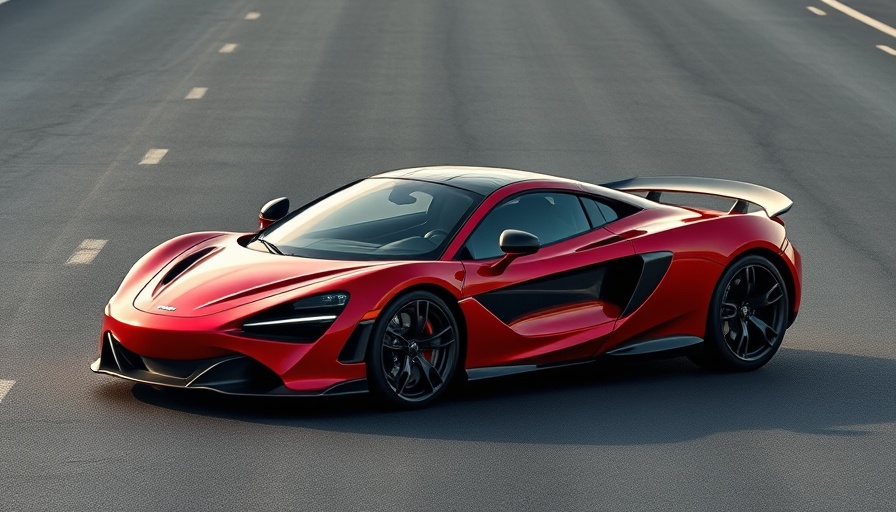
A Special Tribute to Racing Heritage
This week, McLaren unveiled the JC96, a remarkable limited edition 750S supercar specifically crafted for Japan. This release pays homage to McLaren’s remarkable victory in the All-Japan Grand Touring Car Championship in 1996, a pivotal moment in the brand's racing history.
Exclusive Details and Design Elements
Only 61 units of the JC96 will be made, each featuring a unique 'Tiger Stripe' livery reminiscent of the McLaren F1 GTR that dominated the track nearly three decades prior. From the striking exterior accents—such as the gloss black front splitter and rear wing—to a luxurious Alcantara interior adorned with special 'JC96' branding, this vehicle encapsulates the pinnacle of automotive craftsmanship. Customers will also have the luxury of selecting from several color options including Memphis Red and Titanium Silver, or opting for a bespoke shade via McLaren's specialized paint program.
Performance Meets Heritage
Despite the aesthetic enhancements, the JC96 maintains the formidable performance profile of the regular 750S, powered by a twin-turbocharged 4.0-liter V-8 engine that delivers a robust 740 horsepower. With a seven-speed dual-clutch transmission, this special edition aims for a top speed of 206 mph—ensuring that functionality matches its stunning appearance. While no changes have been made to the drivetrain, an optional High Downforce Kit can enhance downforce by 10 percent, marking a first for the Spider variant.
Market Implications for Auto Dealers
The release of the JC96 not only highlights McLaren’s dedication to honoring its racing legacy but also poses significant insights for auto dealers and manufacturers alike. Limited editions often create a buzz within the automotive market, presenting unique marketing opportunities. Dealers can leverage the exclusivity and cultural significance of such commemorative models in their sales narratives, targeting collectors and enthusiasts who are willing to invest in high-value automobiles.
Looking Towards the Future
While a delivery timeline for the JC96 remains uncertain, industry insiders suggest that the car could begin its journey to customers by 2026. This timing aligns with the celebration of the original race victory, providing a perfect backdrop for engaging with both prospective buyers and avid fans.
As McLaren continues to innovate while respecting its rich heritage, opportunities abound for stakeholders in the automotive industry to capitalize on emerging trends that prioritize exclusivity and history. Masters of the art of storytelling, brands like McLaren showcase how deeply rooted narratives can enhance consumer interest in high-performance vehicles.
 Add Row
Add Row  Add
Add 




Write A Comment